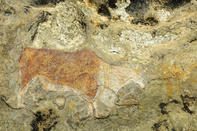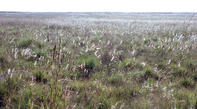!Kwi in the Cradle
Culturally, the earliest identifiable group on the planet is the Bushmen or San, who lived in most parts of Southern Africa from at least 30 000 years ago. Their !Kwi language and their prolific rock art dates back thousands of years (the oldest rock engraving is 70 000 years old and the oldest cave paintings are 27 000 years old), clearly marking Southern Africa as the place where modern civilisation began.

Since the Cradle of Humankind region has always had a good supply of game, with well-watered valleys and fertile ground, it is a no-brainer that tribes of Bushmen would be living in the area. Evidence for this can be found at Kruger Cave, between Rustenburg and the Cradle of Humankind, where archaeologists have found string and stone tools dating back 7000 years.
Bushmen artefacts have also been found in Uitkomst Cave in the John Nash Nature Reserve, and several rock engravings have also been found in the area. The Bushmen were masters of Late Stone Age technology, but about 1000 years ago, the iron age dawned in Southern Africa with the arrival of the Bantu.
These migrant tribes had been slowly making their way down the continent from their original home in West Africa for a couple of thousand years, and they brought with them new technology from the Middle East, such as agriculture, cattle cultivation and the ability to smelt and forge iron. This would distinguish them from the nomadic Bushmen who did not own herds of their own.
Ntu in the Cradle

The name ‘Bantu’ comes from a root language (Ntu) that many present-day tribes in Africa still share on some level. As they settled in South Africa, however, they began arranging themselves into distinct tribal groups, each with their own dialect and culture.
The Nguni (Swazi, Zulu and Xhosa) chose to settle along the coast, arranging themselves into small uMisi (homesteads) which were governed by a system of chiefs and headmen.
The Sotho (including the Tswana and the Pedi), on the other hand, settled on the high grasslands of the interior and developed into over 60 different sub-clans. They preferred to live in large communities of up to 15 000 people, and their system of government seems to have been more democratic.
By 1500AD, members of the Sotho/Tswana tribe had moved into the Cradle of Humankind area and started making themselves at home. Two major tribes have been identified, the BaPo and Kwena ba ka Mmatau, and remains of their iron furnaces, stone enclosures for their cattle and goats, and distinctive pottery have been found at several sites in the Cradle of Humankind.
For several hundred years, these tribes lived a life of relative peace and prosperity.
By David Fleminger